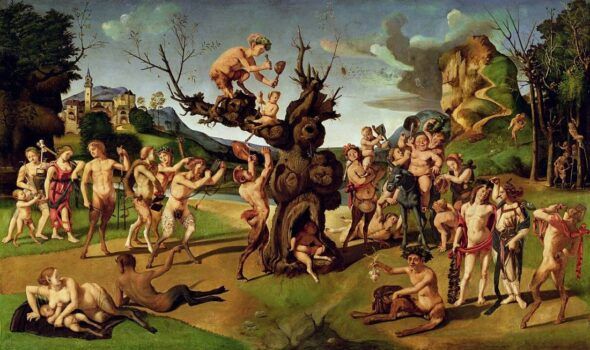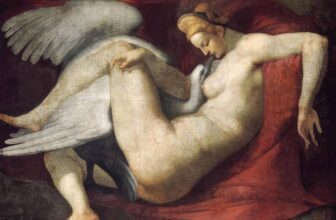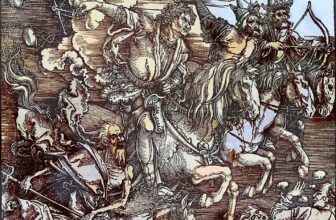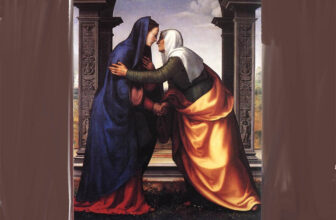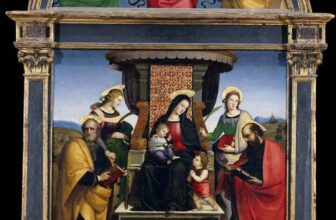The World of Piero di Cosimo: Life, Paintings, and Legacy
| Invest in Hidden Masterpiece: Rare Antique Oil Paintings For Sale. Limited Originals Available 💰😊 Are you looking for authentic hidden masterpiece? Explore old master antique oil paintings from the Renaissance and Baroque eras. From 16th-century portraits to 18th-century landscapes. Authenticity guaranteed, Old Master antique oil paintings for sale. Shop Now! 🎨 Renaissance And Baroque Art Landscape Antique Paintings Old Master Portrait Paintings |
The Italian Renaissance was an age of brilliance, an epoch where human creativity and intellectual curiosity collided to produce some of the most enduring works of art in history. Names like Leonardo da Vinci, Michelangelo, and Botticelli dominate our imagination when we think of this time, but woven within this tapestry of genius is the mysterious and captivating figure of Piero di Cosimo. Known for his eccentric personality and wildly imaginative paintings, Piero di Cosimo carved out a distinctive place in Renaissance art. His paintings are less about polished perfection and more about wonder, strangeness, and allegory, qualities that still intrigue viewers centuries later.
This is the story of Piero di Cosimo, the artist who brought myth, nature, and fantasy together in extraordinary ways.
The Life and Story of Piero di Cosimo
Piero di Cosimo, born Piero di Lorenzo di Chimenti in 1462 in Florence, Italy, inherited his nickname from his master Cosimo Rosselli, under whom he apprenticed. Like many Renaissance painters, he began his career working on traditional religious commissions, learning fresco technique, and developing a sense of composition. However, Piero soon diverged into a unique artistic path, one that leaned toward the fantastical and the eccentric.
Accounts of his life paint him as an odd, reclusive man, deeply fascinated by the natural world and filled with unusual habits. Giorgio Vasari, the famous Renaissance biographer, describes him as a man who lived almost like a hermit, eating only boiled eggs cooked fifty at a time, and being terrified of thunderstorms. Whether these anecdotes are exaggerations or not, they reflect the sense that Piero di Cosimo was seen as unconventional even in his own time.
But beneath this eccentricity lay a brilliant imagination. He was drawn to mythology, pagan stories, and naturalistic detail at a time when many of his contemporaries focused on Christian themes. His art reveals a restless curiosity and an interest in both the beauty and strangeness of existence, qualities that make his paintings unforgettable today.
What Is Piero di Cosimo Known For?
Piero di Cosimo is best known for his mythological scenes, allegorical paintings, and fantastical depictions of ancient stories. Unlike many Renaissance artists who sought harmony, balance, and serene beauty, Piero infused his canvases with mystery, odd symbolism, and dreamlike imagery. He had a particular fascination with the beginnings of civilization and often painted primitive scenes of humanity, hunting, and fire-making, all with mythological undertones.
He is also admired for his deep observation of nature, plants, animals, skies, and landscapes all come alive in his works. In this sense, he is often compared to Leonardo da Vinci, but while Leonardo approached nature through the lens of scientific inquiry, Piero embraced it as a source of wonder and fantasy.
Piero’s versatility also extended to portraiture. His portraits have an intense psychological depth, revealing both the physical likeness of his subjects and a sense of their inner lives.
Piero di Cosimo’s Most Famous Paintings
Though not as prolific as some of his contemporaries, Piero di Cosimo left behind a number of masterpieces that are celebrated today. Below are some of his most famous and important works:
1. The Discovery of Honey (c. 1500)
One of his most unusual works, this painting depicts satyrs, nymphs, and mythological figures rejoicing at the discovery of honey. It represents not only the sweetness of life but also the dawn of civilization. The figures are painted with both humor and sensuality, showing Piero’s talent for merging the mythical with the earthy.
2. The Hunt (c. 1494–1500)
This scene shows primitive humans hunting with the aid of dogs. The painting reflects Piero’s fascination with early humanity, evolution, and survival. It is also infused with allegorical meaning, suggesting humankind’s development from barbarism to civilization.
3. Perseus Rescuing Andromeda (c. 1510–1513)
A dramatic mythological canvas, it shows the hero Perseus slaying the sea monster to save Andromeda. Piero fills the composition with fantastical detail, including monstrous sea creatures and frightened onlookers. It is both chaotic and mesmerizing, illustrating his taste for the unusual.
4. Venus, Mars, and Cupid (c. 1505)
This sensual mythological painting demonstrates Piero’s ability to capture erotic tension and allegorical meaning. Venus is shown reclining with Mars, while Cupid plays nearby. It reflects Renaissance interest in classical mythology and human passion.
5. Portrait of Simonetta Vespucci (c. 1480–1490)
This haunting portrait of Simonetta Vespucci, one of Florence’s most celebrated beauties, stands out as one of Piero’s masterpieces. The work is infused with symbolism, including snakes coiled around her body, perhaps referencing Cleopatra or Medusa. The portrait captures both her physical beauty and a sense of tragic allure.
6. The Forest Fire (c. 1505)
This extraordinary painting shows animals fleeing a raging fire, capturing chaos, fear, and the destructive force of nature. It may be an allegory of human destructiveness or simply Piero’s fascination with natural disasters. The animals are depicted with remarkable realism and emotional intensity.
7. The Death of Procris (c. 1495–1500)
Inspired by Ovid’s Metamorphoses, this painting depicts the tragic death of Procris, accidentally killed by her lover Cephalus. The image is filled with sorrow and mythological symbolism, showing a reclining Procris with a faithful dog mourning her side.
How Many Paintings Did Piero di Cosimo Create?
The exact number of Piero di Cosimo’s paintings is uncertain. Art historians estimate that around 50 to 70 works can be confidently attributed to him, though some may have been lost, misattributed, or remain hidden in private collections. Unlike prolific masters like Botticelli or Raphael, Piero’s output was more modest, but what survives offers a powerful glimpse into his unique vision of the Renaissance world.
Where Are Piero di Cosimo’s Paintings Located Today?
Piero’s paintings are now spread across major museums and collections worldwide. Some of the key locations include:
Uffizi Gallery (Florence, Italy): Holds several of his most important works, including Perseus Rescuing Andromeda and Portrait of Simonetta Vespucci.
National Gallery of Art (Washington, D.C., USA): Houses The Visitation with Saints Nicholas and Anthony Abbot and The Forest Fire.
Gemäldegalerie (Berlin, Germany): Contains mythological paintings such as The Discovery of Honey.
National Gallery (London, UK): Holds The Death of Procris, one of his most haunting mythological works.
Louvre Museum (Paris, France): Features his portraits and mythological subjects.
Private Collections: Some of his paintings remain in private hands, though they occasionally appear in exhibitions.
Piero di Cosimo’s Legacy
Piero di Cosimo remains a somewhat enigmatic figure in Renaissance art. While he never achieved the fame of Leonardo or Michelangelo, his works are celebrated for their originality, imagination, and eccentric vision. He stood apart from the mainstream, painting strange allegories and mythological fantasies that few others dared attempt.
His legacy can be summarized in several key ways:
Innovative Mythological Painting: Piero expanded the boundaries of mythological art, creating scenes that were less about idealized beauty and more about raw imagination.
Influence on Future Artists: His experimentation with fantastical imagery influenced later Mannerist painters and even artists centuries later who sought to explore surreal or dreamlike themes.
Natural Curiosity: His fascination with animals, plants, and natural disasters reflected an almost proto-scientific curiosity, anticipating later artistic and intellectual trends.
Cultural Memory: Today, he is remembered not only as an eccentric Renaissance painter but also as a figure who represents the strange, playful, and mysterious side of Renaissance humanism.
Piero di Cosimo’s paintings are windows into a mind that was anything but ordinary. His mythological visions, his fascination with early humanity, his haunting portraits, and his strange allegories stand as testaments to the diversity of Renaissance creativity. While other artists sought harmony, clarity, and divine beauty, Piero reveled in the chaotic, the mysterious, and the surreal.
Today, his works can be seen across the world, from Florence’s Uffizi to Washington’s National Gallery of Art. They remind us that the Renaissance was not a monolithic movement of calm rationality, but also a time of imagination, wonder, and eccentricity. In Piero di Cosimo, we find an artist who embraced the unusual, and in doing so, left behind a legacy that continues to fascinate art lovers five centuries later.
